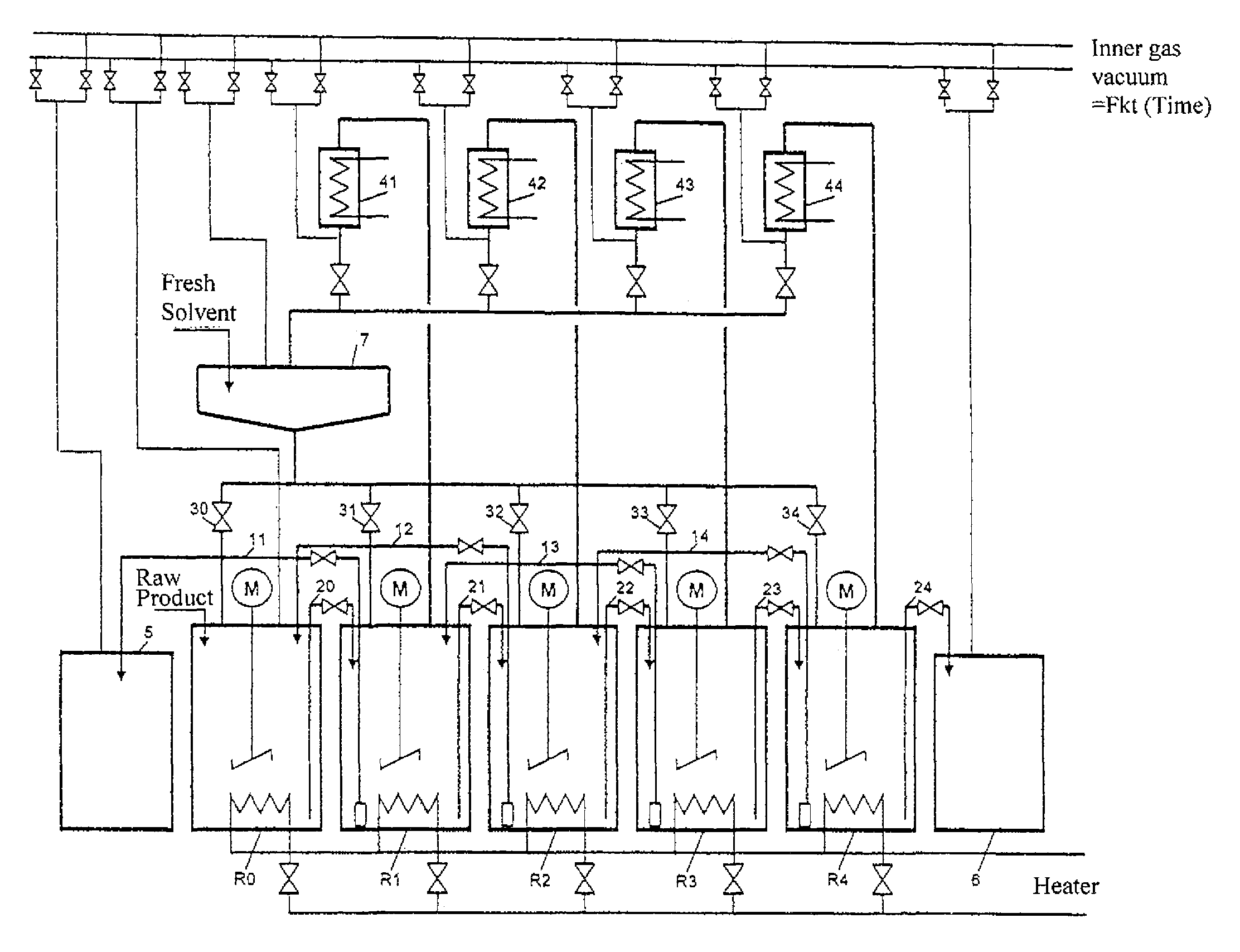Arrangement and method for producing high-purity crystals
a crystallization and high-purity technology, applied in the direction of crystallization by component evaporation, crystallization separation, organic chemistry, etc., can solve the problems of increasing the required time, increasing the yield loss even more, and difficult to achieve the technological implementation of the multiplicative fractionation effect analogous to extraction/rectification, and high process efficiency , good yield of high-purity crystallization products
- Summary
- Abstract
- Description
- Claims
- Application Information
AI Technical Summary
Benefits of technology
Problems solved by technology
Method used
Image
Examples
Embodiment Construction
[0055](Operating the Arrangement with Mobile Crystallization Product Phase)
[0056]As illustrated in FIG. 1, the arrangement for producing high-purity crystals comprises a plurality of crystallizers (R0 to Rn, with n being an integer and ≧2), n mother liquor lines (11 to 1n) each of which has a shut-off valve, n+1 crystallization product lines (20 to 2n) each of which has a shut-off valve, n+1 shut-off valves (30 to 3n) for dosing the solvent, n capacitors (41 to 4n) and a storage vessel (5) for waste, a storage vessel (6) for the pure product and a storage vessel (7) for distillates or fresh solvents, wherein the crystallizers Rn and Rn−2 are connected with each other via the mother liquor line 1n and the crystallizers Rn and Rn+1 are connected with each other via the crystallization line 2n.
[0057]The mother liquor line 11 leads from crystallizer R1 to the storage vessel (5) for waste, the crystallization line 2n leads from the crystallizer Rn to the storage vessel (6) for the pure ...
PUM
| Property | Measurement | Unit |
|---|---|---|
| temperature | aaaaa | aaaaa |
| purity | aaaaa | aaaaa |
| temperature | aaaaa | aaaaa |
Abstract
Description
Claims
Application Information
 Login to View More
Login to View More - R&D
- Intellectual Property
- Life Sciences
- Materials
- Tech Scout
- Unparalleled Data Quality
- Higher Quality Content
- 60% Fewer Hallucinations
Browse by: Latest US Patents, China's latest patents, Technical Efficacy Thesaurus, Application Domain, Technology Topic, Popular Technical Reports.
© 2025 PatSnap. All rights reserved.Legal|Privacy policy|Modern Slavery Act Transparency Statement|Sitemap|About US| Contact US: help@patsnap.com



